

It was a cold day at the beach. As storm clouds rolled in overhead, I rolled out. Just before passing Lake Shore Drive on my bike, I noticed a patch of restored land I’ve never worked on with the Park District. The people working here, the contractors, planted many grasses as well as the usual forbes. Upon noticing a couple of tiny milkweeds, I was reminded of what limited time I have to enjoy the shoots and leaves of this plant.
I make a point not to eat much milkweed, since it’s a native plant that attracts pollinators and Monarchs. But eating plants does allow us to get to know them more intimately, and milkweed is a tender, relatively worthwhile forage. The unopened buds a lot like broccoli. Plus as the name implies, it is weedy. Once the plant gets larger than seen in the photo below, its flowers and seedpods can be utilized. According to many sources, the leaves and stem are best eaten when just unfurling, or under 8 inches in height. According to “Wildman” Steve Brill, the young upper leaves are only edible through mid to late spring. I’ve noticed there tend to be a lot of “late bloomers” in the milkweed family, like those below. I’ve seen flower buds just opening well into summer, but for the most part, the upright-positioned seed pods start to form early to mid-summer.

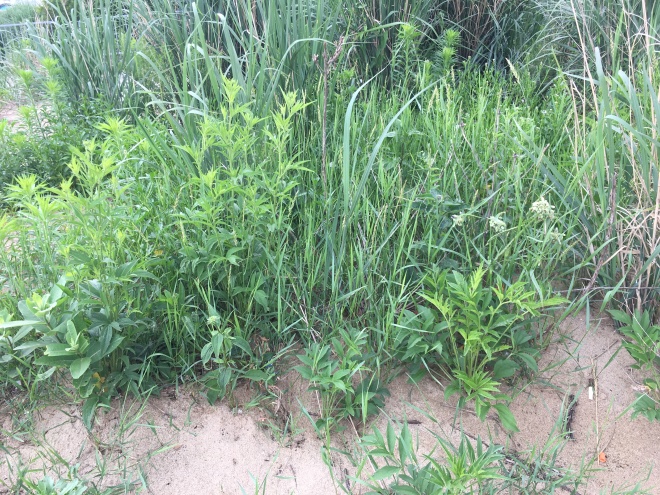
a couple of small common milkweed plants, left
Common milkweed has oppositely oriented, oval, slightly fuzzy leaves and unique little 5 petaled flowers that grow in radial clusters like pom-poms. Only during the spring before flower buds form can milkweed be mistaken for its mildly poisonous neighbor, dogbane. Dogbane is a native plant that likes to grow in similar areas as milkweed. Dogbane has more of a reddish stem when mature and develops many branches. Both plants are weedy, but milkweed seems more familiar to me–although dogbane isn’t uncommon. Dogbane’s flowers look much different than milkweed, so any confusion would probably come in earlier stages of development. There are a few varieties of apocynum, or dogbane, and all are poisonous. As far as I can see, the most common is apocynum cannabinum; Apocynum means “away dog!” and cannabinum means “like hemp” because of its use in making cording. The plant is commonly called Indian Hemp. Both plants have oppositely-oriented leaves and bleed a white milky latex when cut.
When in doubt, don’t eat common milkweed. When identifying the young plant, it may be helpful to use a magnifying glass to inspect stem for tiny hairs. Be aware, and never eat a plant you can’t positively identify. Milkweed is poisonous raw and some people can react negatively even after eating the cooked plant. I’ve never experienced any ill effects from milkweed. After positively identifying this plant, it’s generally it’s good to start off by eating just small amounts of the cooked plant.
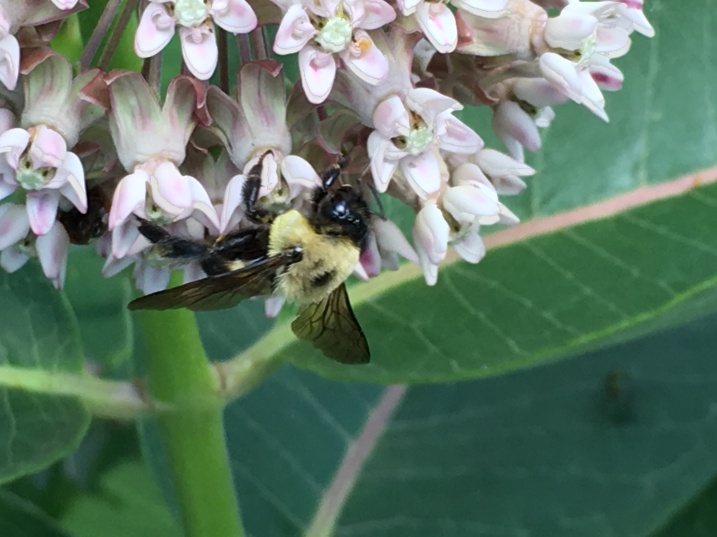
Brown-belted bumble bees seem to love common milkweed. I believe we have one here, dressed in a fuzzy vest!
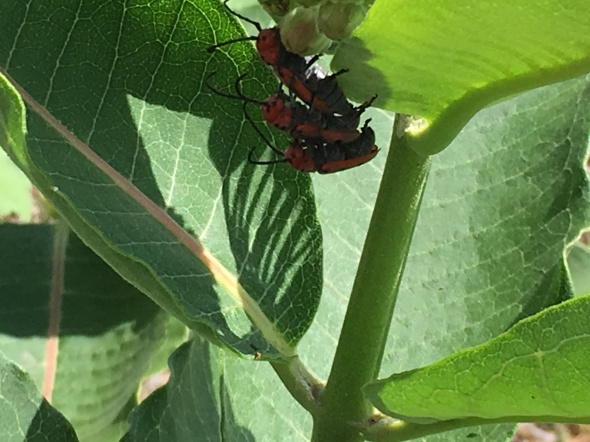
If you’ll be utilizing flowers or buds, inspect for tiny larvae. Begin by immersing in heavily boiling for 20 minutes, drain water, add new water and boil again for another 20 minutes. More advanced foragers note that the customary double boiling process is unnecessary, but I always double boil milkweed. In general, boiling eliminates bitter alkaloids, cardiac glycosides, and its sappy latex. If you’ve boiled in a couple changes of water and the plant is bitter, you have the wrong plant!
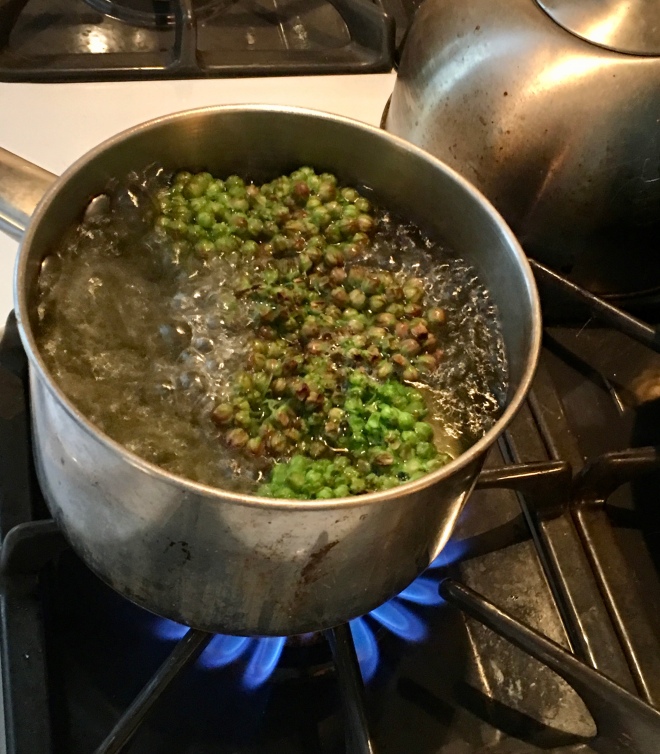
Boiling common milkweed
Strain, and be sure to press out all remaining liquid. By this point, the milkweed will be like a wad of mush. To be honest, any plant that’s been boiled several minutes will taste somewhat bland and mushy. This is not my favorite textural experience, but seems like standard method for many wild foods. I’ve read of people changing water 4-5 times with smaller boiling intervals. Seems like a lot of work, bringing water to a boil over and over like that.
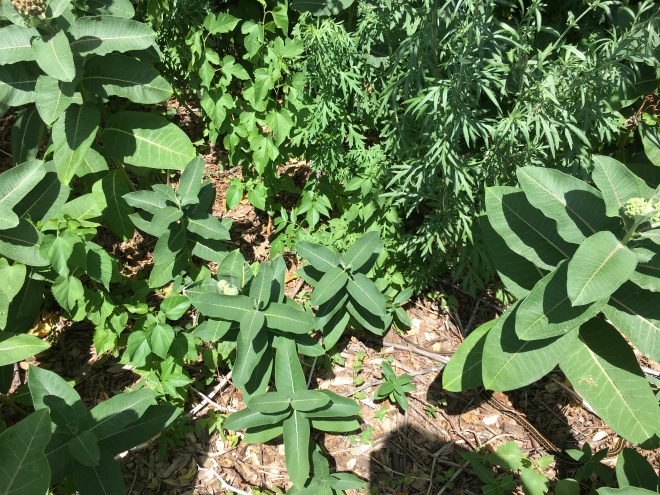
Notice the opposite leaf pattern and symmetry of asclepias syriaca, Common Milkweed

And, simply because I love black and white plant photography:
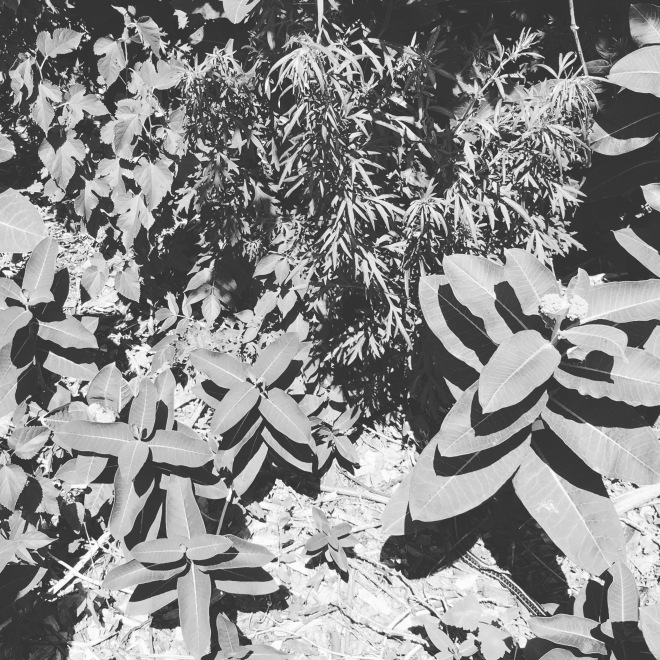
Besides looking really unique, this plant attracts interesting and colorful bugs including red milkweed beetle, western honey bees, and most famously, Monarch butterflies. There are other varieties of asclepias, including swamp milkweed, asclepius incarnata, and butterfly milkweed, asclepius tuberosa. Swamp milkweed is one of my favorite plants, though I haven’t seen much of it this year. It has bright pink leaves and looks similar, if not larger than the butterfly milkweed pictured below. I’ve read that swamp milkweed can be used much in the same way as common milkweed, but I’ve never used it, and don’t recommend it–I could be wrong, but it seems to be getting more and more scarce.
Butterfly milkweed is orange, with very similar flowers to common milkweed. It is commonly found as a roadside weed, but doesn’t reseed as easily as common milkweed. It prefers dry soil. Interestingly butterfly milkweed does not produce a milky sap, either.
I have read that butterfly milkweed is poisonous and emetic–that’s enough to keep me from eating it! Historically butterfly milkweed, also known as butterfly-weed, or Pleurisy Root has been considered medicinal–according to alternative medicine expert Karen Burgeron, perhaps the most valuable alternative medicine of all American species. A warm infusion of the root extract can be applied as a warm poultice to burns, skin ulcers, and wounds. Like many medicinal plants, it is said to have specific action on the lungs–but reports are vague, and I could find little evidence of how exactly people use it for lung afflictions.
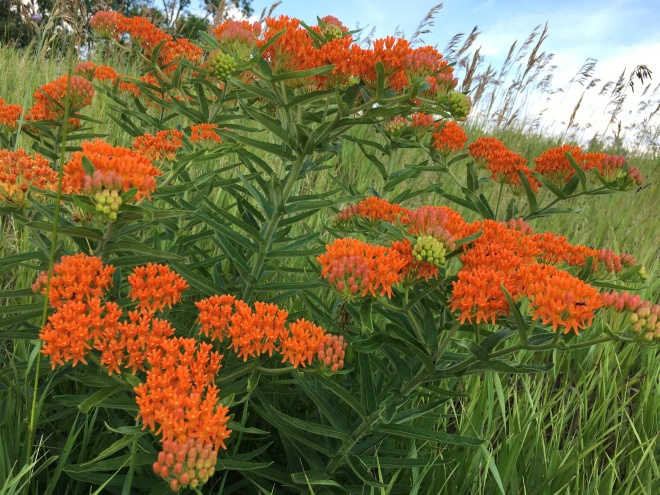
Do not eat butterfly milkweed. It is considered a poisonous but suppodsedly an important medicinal plant when used topically.
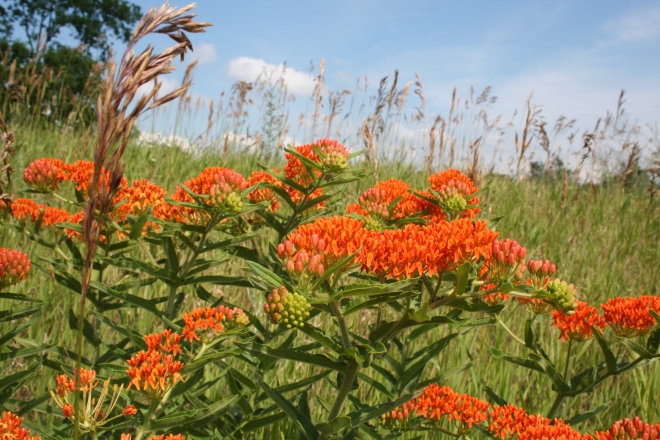
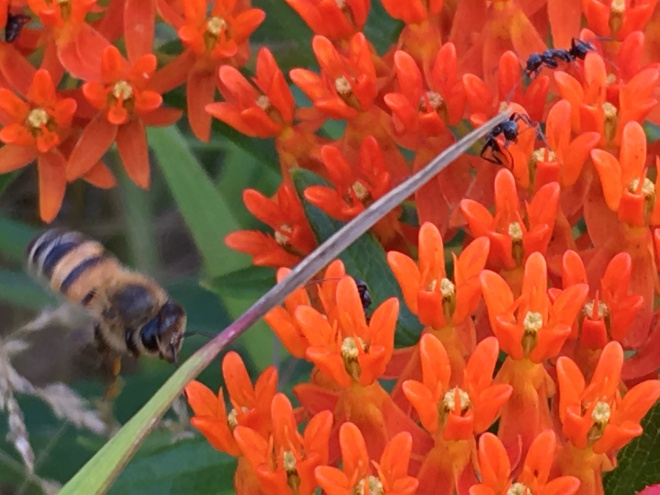

Milkweeds love Michigan, and several butterfly milkweeds are lurking just beneath our field of vision, hidden here behind curtains of grass
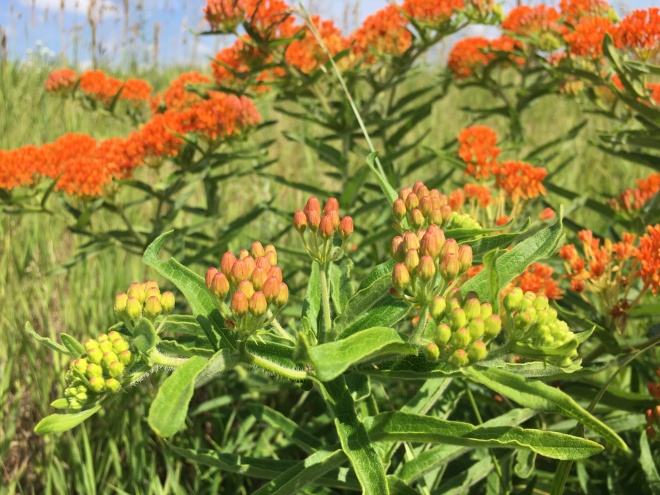
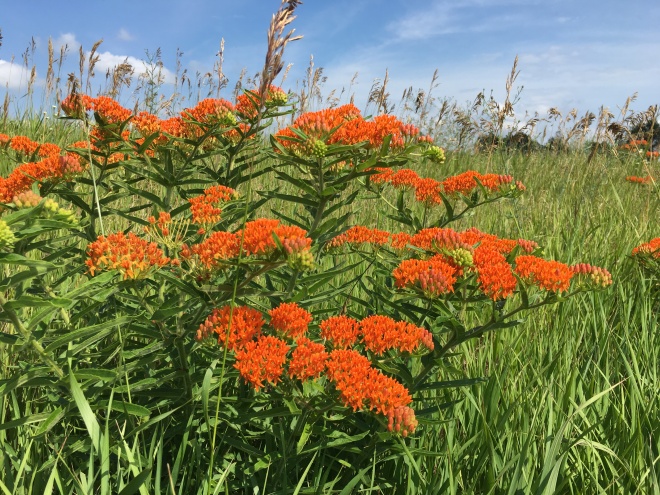
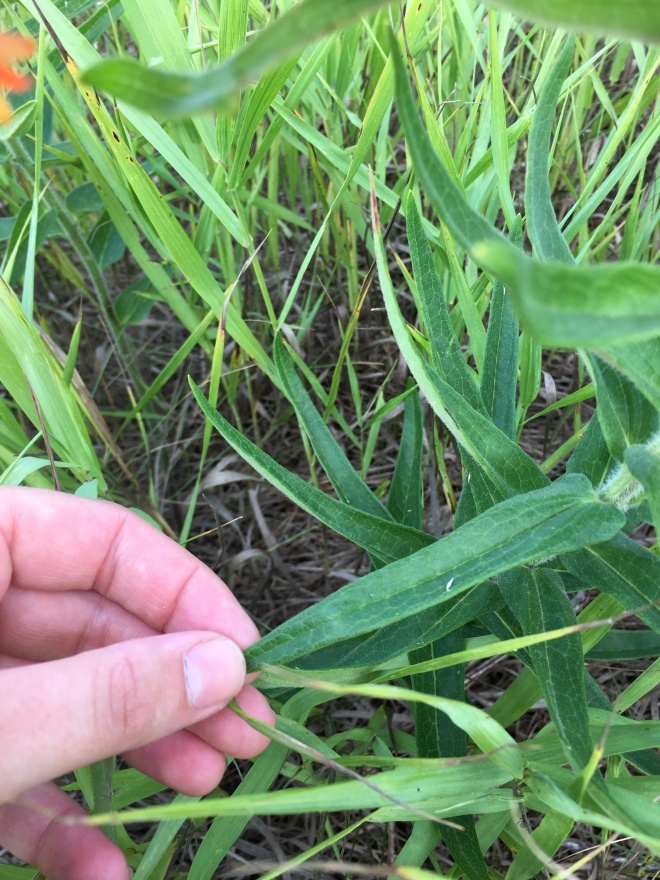
Butterfly milkweed have oblong, narrow leaves and fuzzy stems.
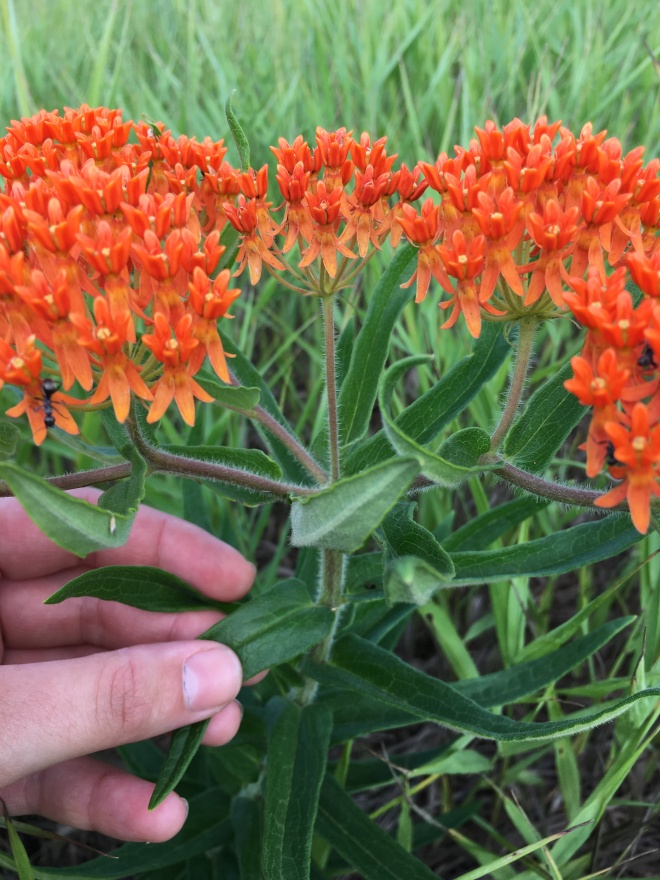
Milkweed seeds are expensive. If you’d like to collect your own in the fall, simply take a seed pod and open–keeping seeds together–this is important, otherwise you will have to defluff a billion seeds. You will want to remove the white fluff from the seeds to increase chance of germination. Before defulffing, or pulling the fluff from the seed, store seeds in an open cardboard box lined with newspaper, and keep in a dry place. Here comes the tricky part: when I worked in the Natural Areas department of the Park District, we would burn the fluff with a lighter. This would make quite a show, and was a fun way to spend an afternoon at work! My coworker Whitney and I would line up the seeds in heart and star shapes and watch the fire run along the seeds like dominoes. Prairie plants like fire, right? Well, perhaps the fire strengthens the seeds. But I question to what degree. I think if I was doing this on my own and didn’t need to plant a bajillion seeds over acres of land, I would do things more simply. I would be sure not to separate the seeds after taking them out of the pod–this is worth repeating, because remember, if you separate all of the seeds at first, you’ll be defluffing hundreds of individual seeds. Rather, take seeds out in a clump, and they’ll be all lined up and ready to be defluffed in groups. Then store seeds in the refrigerator over the winter in airtight plastic bags, or plant immediately in the fall.
